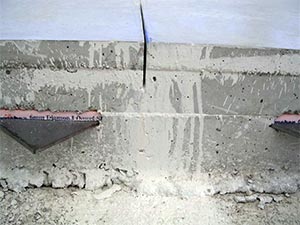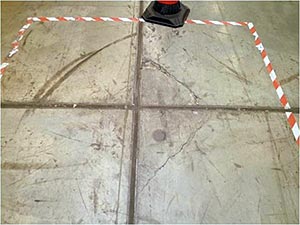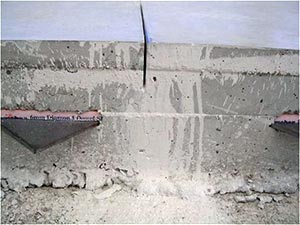Joint Activation

An induced joint is activated when it cracks and starts to open.
Read More
An induced joint is activated when it cracks and starts to open.
Read More
Over the working life of a concrete slab, some of the joints are likely to deteriorate to some extent, especially if they are heavily trafficked by Materials Handling Equipment (MHE).
Read More
A joint intersection is the point at which two joints intersect or where the corners of four panels meet.
Read More
is important in the design of a concrete floor. A good joint layout can minimise the risk of unwanted random cracks.
Read More
Joint Sealants are supplied as liquids or paste-like materials that cure to create a flexible seal.
Read More
The Joint Stabiliser eliminates concrete joint load transfer problems with a spring-like mechanism which allows it to expand and contract with the slab.
Read More
A jointed bay is a pour divided into smaller panels by sawn restrained-movement joints.
Read More
A jointless bay is a large pour with no induced joints.
Read More
Floor constructed in large panels without intermediate joints.
Read More
Vertical discontinuity provided in a floor slab to allow for construction and/or relief of strains. The terminology relating to the various types of joint is complex, and reference may be made to the definitions of individual joint types
Read MoreAsk one of our experts or suggest a definition.